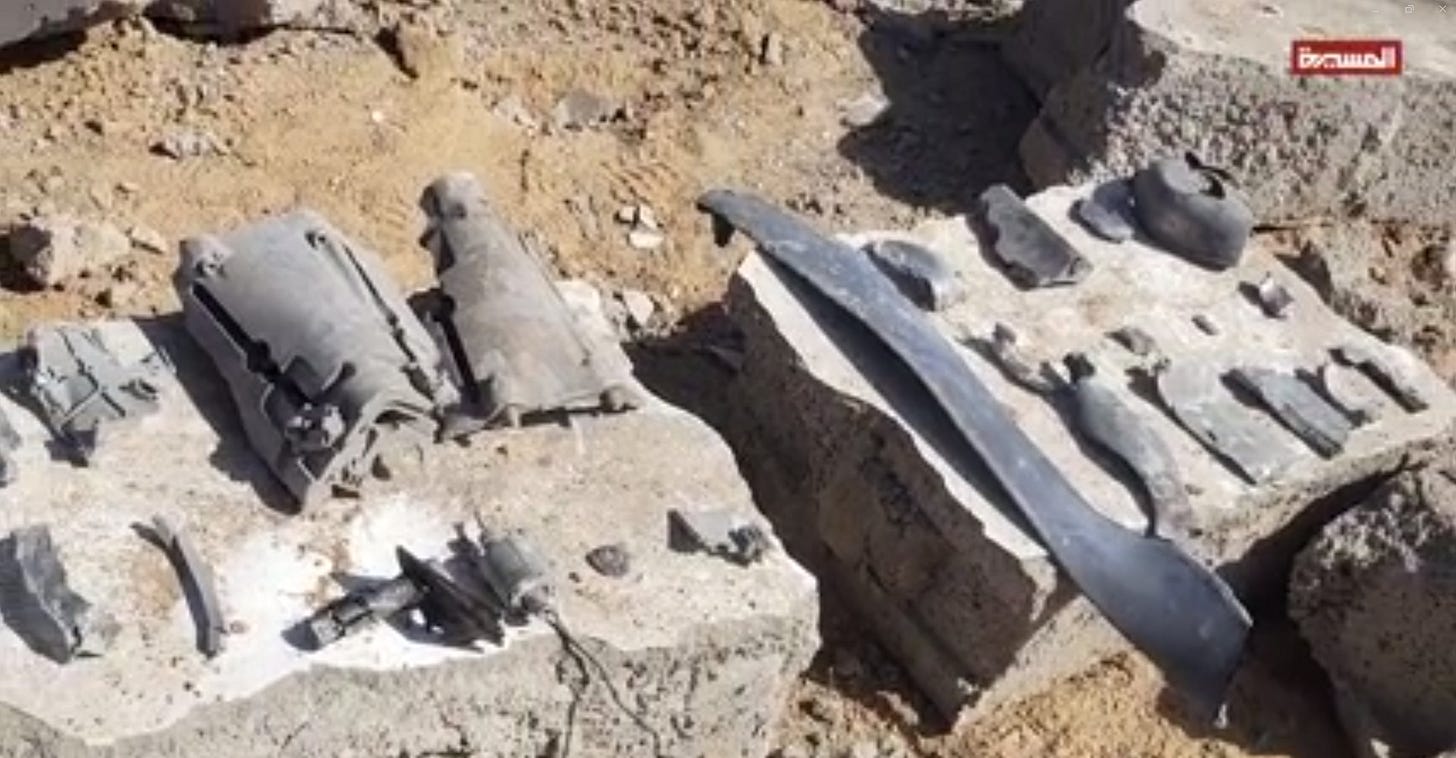U.S.-Made Bomb Fragments Identified at Strike on a Migrant Facility in Yemen That Killed Nearly 70
Earlier this week, a pre-dawn airstrike on a detention center in Sa’ada, northern Yemen killed nearly seventy African migrants. The Houthis blamed the attack on the U.S., while the U.S. said it was “aware” of the claims, but has not confirmed its involvement. Munitions experts, however, said that the fragments of a bomb found at the site were from the U.S.-made GBU-39.
Verified footage from the aftermath of the strike showed lifeless bodies and thin, dismembered limbs strewn across bloody debris, as injured and stunned men and women huddled in the wreckage.

The center itself was hit at least three times in slow succession according to Sanaa, an Ethiopian activist based in Yemen’s capital who spoke with fellow survivors. The subsequent strikes hit survivors and halted the rescue operations. “Of course, this place is neither a legitimate target nor humane; it is a complete failure,” said the activist, who asked to be identified by her first name only. Sanaa also commented that an additional strike was carried out near the center.
There is no capacity to manage the devastation, Ismail Al-Warfi, Head of the Republican Hospital Authority in Saada, told Drop Site. One of the airstrikes hit the prison gate, which delayed the rescue and transportation operations, he noted. The prison’s ambulance was also destroyed. The amount of rubble created the need for cranes to dig people out from the ruins. “The situation there was catastrophic. Everyone was shocked—what was the point of targeting these peaceful Africans? It was a tragedy,” Al-Warfi said.
Al-Warfi pointed out that the support offered by humanitarian organizations at this critical moment is insufficient; the United Nations suspended all humanitarian operations in Saada in February after Houthis detained UN workers. Only the International Committee of the Red Cross showed up, he said, renting a morgue refrigerator and providing some medications barely enough for ten people. "The rest of the organizations did nothing. We hold the international organizations responsible and consider them complicit in the crimes of aggression.”
Given the extent of the damage, it appears that multiple GBU-39 bombs were used, affirmed Trevor Ball, a munitions researcher and a former U.S. army explosive ordnance disposal specialist. Ball told Drop Site he thinks the detention facility was intentionally targeted, since GBU-39 are precision munitions and the site was hit multiple times.
GBU-39 bombs have been used by Israel in Yemen, but it appears this is the first evidence of their use by the U.S. in the last year, noted Ball.
The Pentagon did not respond to a request for comment regarding the use of GBU-39 bombs.
Yemen is a pivotal transit point for migrant workers from the Horn of Africa—forced from their home by conflict and climate change that has ruined their livelihood—often journeying to neighboring Saudi Arabia to look for work. Tens of thousands make the crossing every year, risking death, abuse, and detention along the way.
U.S. Central Command (USCENTCOM) has refused to disclose details on the strikes, but it has acknowledged carrying out more than 1,000 hits on targets in Yemen since it launched Operation Rough Rider in mid-March. The Yemen Data Project, which tracks airstrikes in the country, reported that more than 158 civilians had been killed in Trump’s bombing campaign. The group also recorded at least thirteen strikes on civilian objects between April 1 and April 22.
The migrant center in Saada had been hit before in 2022. “We saw the terror and shock on the faces of the injured Africans. It never occurred to them that they could be a target,” Al-Warfi, the head of the Hospital Authority, told Drop Site. “But the incident reminded us of the similar attack. We saw headless bodies and others reduced to scattered limbs.”
"The Saudis bombed that detention center in 2022, and the ICRC has been visiting it regularly. You would have thought that would have gone on the CENTCOM no strike list. Or maybe they were willing to absorb that amount of civilian casualties. At a minimum this tells a story of some sort. It's pretty damn worrying,” Brian Finucane, a Senior Advisor at Crisis Group’s US Program, told Drop Site.
Niku Jafarnia, a Yemen researcher at Human Rights Watch, likewise told Drop Site that “Dozens of civilians killed while working at a port, and dozens of migrants killed in a detention center within two weeks, amongst dozens of other strikes that have killed civilians, is not just an anomaly: it’s a pattern demonstrating that the Trump administration appears to have an even greater disregard for civilian life than his predecessors.”






The planners, facilitators and perpetrators of these acts think that they are untouchable. I wouldn't bet on it. The entire Global South sees what they are doing.